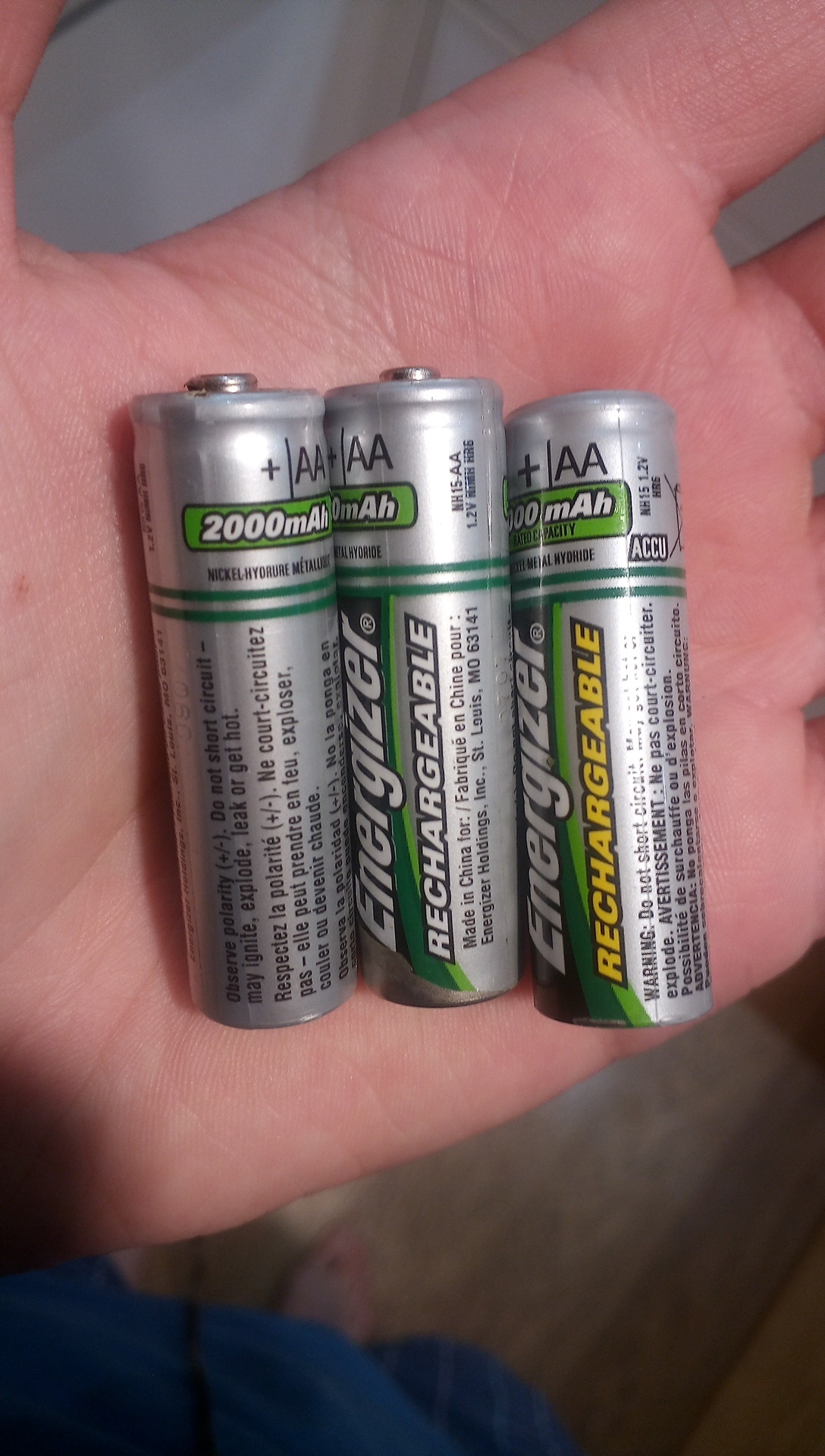this post was submitted on 07 Aug 2023
497 points (100.0% liked)
Technology
37750 readers
205 users here now
A nice place to discuss rumors, happenings, innovations, and challenges in the technology sphere. We also welcome discussions on the intersections of technology and society. If it’s technological news or discussion of technology, it probably belongs here.
Remember the overriding ethos on Beehaw: Be(e) Nice. Each user you encounter here is a person, and should be treated with kindness (even if they’re wrong, or use a Linux distro you don’t like). Personal attacks will not be tolerated.
Subcommunities on Beehaw:
This community's icon was made by Aaron Schneider, under the CC-BY-NC-SA 4.0 license.
founded 2 years ago
MODERATORS
you are viewing a single comment's thread
view the rest of the comments
view the rest of the comments

Those batteries in your photo are NiMH batteries... which discharge on their own at a fairly rapid rate even if you're not using them at all. They're also pretty big and heavy for the amount of power they provide (which, due to the self-discharge issue, is effectively a lot lower than the official number on the battery).
I strongly recommend investing in devices that use 18650 batteries. They're about the same size/weight as a AA, and they last much longer (both in terms of from full to flat and also the number of years (decades?) of use you'll get from the battery.
A lot of "proprietary" batteries are in fact a bunch of 18650 cells wired together.
It's worth investing in good ones - the quality varies significantly from brand to the next. With a good 18650 cell, you won't be replacing it when the battery expires, you'll be transferring it to a new gadget when the gadget is broken or so old that you decided to buy a new/better model.
They make USB rechargeable lithium ion batteries in every common form factor. I use lithium rechargeable AAA batteries in my mouse and they work great. You don't even need a charger, they are USB-C. Highly recommend.
They can be very useful for the devices that want the full 1.5V, as they can provide that 1.5V across their whole charge cycle, unlike NiMH and Alkalines that drop down the voltage. They are also lighter than NiMH. However they are also more expensive and for most devices NiMH will work just as well, while costing less.
Another thing worth mentioning, NiMH show charge in mAh on the package, Li-Ion very often give it at mWh, which makes the Li-Ion look 20% bigger than they are.
I mean I can't really blame them for being smaller, the USB port is a lot of value added but is also pretty huge.